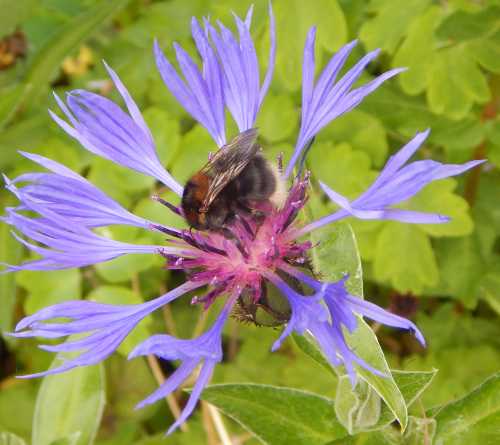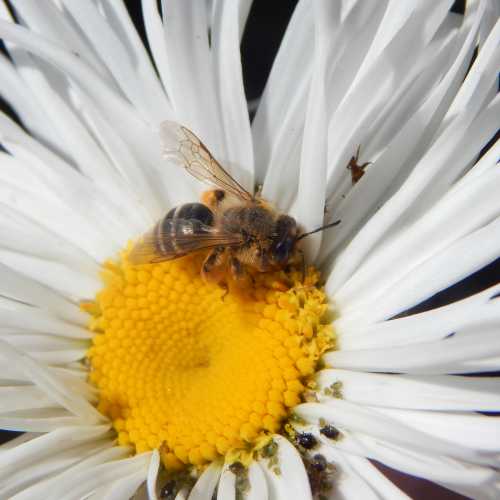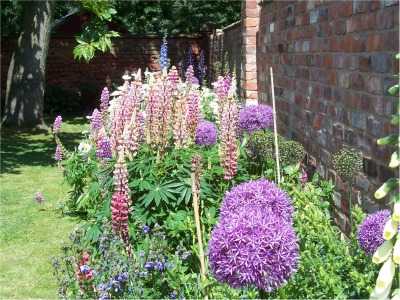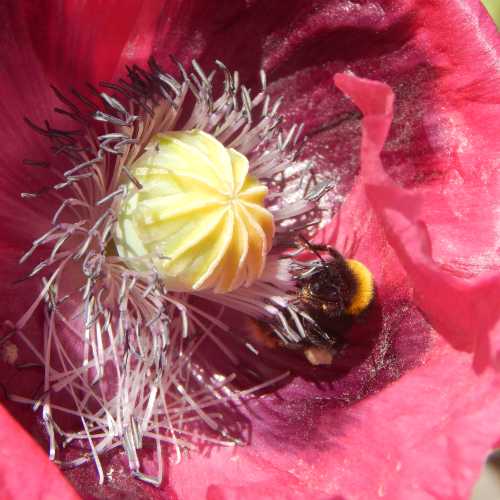Are Bees Attracted To Cornflowers?
Bees, like other insects, are attracted to cornflowers - also known as 'bachelor's button'.
The annual wild cornflower - Centaurea cyanus, is easy to grow and is frequently added to wildflower seed mixes, or try the sturdier, perennial mountain cornflower - Centaurea montana, which has lovely, silvery leaves.
Why Bees And Other Insects Are Attracted To Cornflowers
Cornflowers, like the common knapweed, Centaurea nigra, are part of the Asteracaea family, along with many other flowers known to be popular with pollinators, from daisies to thistles.
 Bombus hypnorum on Centaurea montana in my garden.
Bombus hypnorum on Centaurea montana in my garden.The key benefit of cornflowers to bees and other pollinating insects lies in their ample nectar reward from spring through summer, combined with a pretty good flowering duration.
But other than anecdotal evidence (gained from observing bees in our gardens and other places) how do we know?
How much nectar do cornflowers provide for bees?
A 20161 study found that wild cornflower - Centaurea cyanus offered an average reward of 895.831 micrograms of nectar per day, per flower head. (You can see data tables on my page about Cosmos bipinnatus).
This score made it one of the most important sources of nectar in the study. Furthermore, a flower head remains in bloom on average for about 6.4 days, thus providing opportunity for bees to forage from the flower to retrieve the nectar for a good duration of time.
Nectar is vitally important for bees, since it provides carbohydrate, and hence energy, in the form of sugars.
Honey bees in particular, gather and store nectar which is then turned into honey as winter food stores.
Bumble bees on the other had, temporarily keep nectar in wax 'pots' inside the nest for sustaining the queen bumble bee and colony members.
Do cornflowers have pollen?
Cornflowers do offer a pollen reward for bees, although in comparison with the abundance of nectar offered, it is a modest amount at 0.547 micrograms on average per flower head per day.
How should I grow cornflower for bees?
The annual wild cornflower - Centaurea cyanus, can be sown from seed in a sunny spot, directly into the soil where they are to flower.
I have Centaurea montana in my garden. If starting from scratch, it is best sown in pots under glass, then transferred outdoors where they are to flower.
Once the plant is established, you can divide the plants, or easier still, transfer self-seeded plants that result from the original. I have gained most of my plants from the self-seeded offspring.
If you end up with spare plants, don't forget to donate any spares to friends and family, to increase the abundance of bee-friendly plants in your area, or why not offer them free at the garden gate?
References
1. Hicks DM, Ouvrard P, Baldock KCR, Baude M, Goddard MA, Kunin WE, et al. (2016) Food for Pollinators: Quantifying the Nectar and Pollen Resources of Urban Flower Meadows. PLoS ONE 11(6): e0158117.
If you found this page helpful or interesting, I'd really be grateful if you would share it with others - if not this page, perhaps another, such as Gardening For Bees.
Thank you so much :) .


